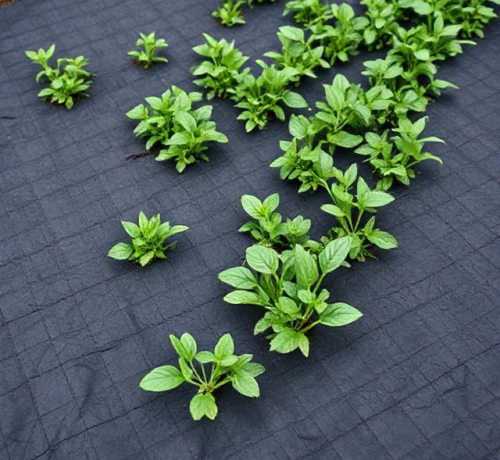Weed Mats for Landscaping
Tired of battling relentless weeds that sabotage your carefully crafted landscape? You’re not alone. Weeds are a common gardening nemesis, but thankfully, effective solutions exist. Enter weed mats, also known as landscape fabric or weed barrier, a powerful tool for achieving weed-free, beautiful outdoor spaces. This comprehensive guide will delve into the world of weed mats. Covering their types, benefits, proper installation, and considerations for optimal results.
What are Weed Mats?
Weed mats are permeable barriers designed to suppress weed growth by blocking sunlight, which is essential for photosynthesis. They are typically made from woven or non-woven materials, each offering unique properties and applications.

Types of Weed Mats
Woven Landscape Fabric:
Made from tightly woven polypropylene or other synthetic fibers.
Strong and durable, ideal for long-term weed control.
Allows for better water and air permeability compared to some non-woven options.
Suitable for use under mulch, gravel, or pavers.
More resistant to tearing, making it suitable for areas with foot traffic.
Non-Woven Landscape Fabric:
Made from bonded fibers, creating a felt-like material.
Generally less expensive than woven fabric.
Good for short-term weed control and lighter applications.
May be less durable and prone to tearing.
Varying thickness allows for differing levels of weed supression.
Biodegradable Weed Mats:
Made from natural fibers like jute, coconut coir, or paper.
Decompose over time, enriching the soil.
Environmentally friendly option.
Suitable for temporary weed control and erosion control.
May require more frequent replacement.
Plastic/Polyethylene Weed Barriers:
Solid plastic sheets.
Completely block light and water.
Not recommended for most garden applications due to poor drainage and lack of air circulation.
Can be useful in certain industrial or specialized applications.
Benefits of Using Weed Mats
Effective Weed Control: Significantly reduces or eliminates weed growth.
Reduced Herbicide Use: Minimizes the need for chemical weed killers.
Moisture Retention: Helps retain soil moisture, reducing the frequency of watering.
Soil Temperature Regulation: Moderates soil temperature, benefiting plant growth.
Erosion Control: Prevents soil erosion on slopes and in windy areas.
Simplified Maintenance: Reduces the time and effort required for weeding.
Enhanced Landscape Aesthetics: Creates a clean and tidy appearance.
Proper Installation of Weed Mats
Prepare the Area:
Remove existing weeds, rocks, and debris.
Level the soil surface.
Amend the soil with compost or other organic matter if necessary.
Lay the Fabric:
Roll out the weed mat over the prepared area.
Overlap edges by at least 6-12 inches to prevent weeds from growing through seams.
Cut the fabric to fit around plants and other obstacles
Secure the Fabric:
Use landscape fabric staples or pins to secure the mat to the ground.
Space staples every 12-18 inches along the edges and throughout the fabric.
Ensure the staples are driven deep into the soil.
Cover the Fabric:
Apply a layer of mulch, gravel, or other covering material over the weed mat.
This protects the fabric from UV damage and enhances the appearance of the landscape.
The depth of the covering material depends on the type of material and the desired aesthetic.
Considerations for Optimal Results
Soil Preparation: Proper soil preparation is crucial for effective weed control.
Fabric Selection: Choose the right type of weed mat for your specific needs and climate.
Installation Technique: Follow proper installation techniques to ensure optimal performance.
Maintenance: Regularly inspect the weed mat for tears or damage and repair as needed.
Planting: When planting through a weed mat, cut an “X” shape in the fabric and plant through the opening. Minimize the size of the opening.
Mulch Depth: Use adequate mulch depth to prevent weeds from germinating on top of the fabric.
Drainage: Ensure proper drainage to prevent waterlogging, especially with non-woven fabrics.
Long term soil health: Remember that while weed fabric supresses weeds, it also can reduce the amount of organic material that enters the soil. Biodegradable weed mats, and proper mulching can help to mitigate this.
In Conclusion
Weed mats are a valuable tool for creating and maintaining beautiful, weed-free landscapes. By understanding the different types of weed mats, their benefits, and proper installation techniques, you can achieve a thriving and aesthetically pleasing outdoor space with minimal effort. Remember to consider your specific needs and climate when selecting and installing weed mats. With proper planning and execution, you can say goodbye to pesky weeds and enjoy a lush, vibrant landscape.










